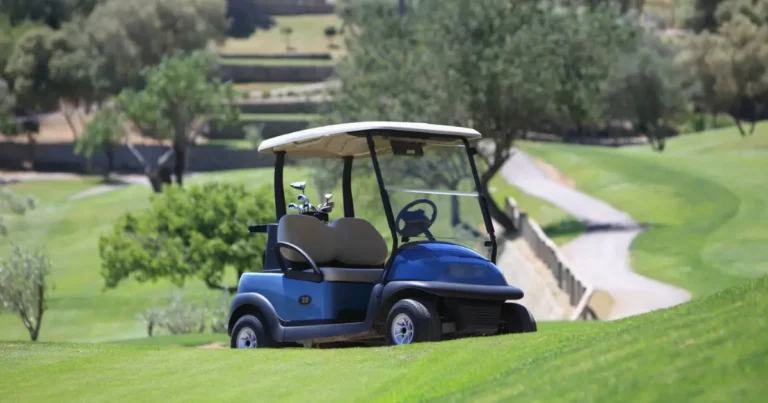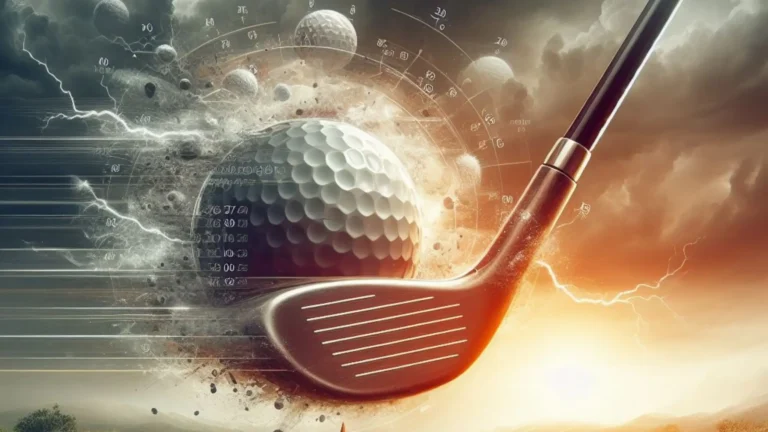How Proper Stance Distance Impacts Your Golf Swing
One of the most common mistakes amateur golfers make is standing too far away or too close to the golf ball at address. The proper stance distance from the ball is essential for making solid contact and maximizing power and consistency in your golf swing. This article will examine why stance distance matters, the optimal stance widths and distances for different clubs, common issues associated with standing too far from the ball, and tips to help you find and maintain the proper stance distance.
Optimal Stance Width and Distance
The width and depth of your stance – referring to the position of your feet in relation to the ball and each other – provide the foundation for your entire swing. Wider stances with the ball positioned forward create stability and facilitate a sweeping motion with the driver and woods. More narrow stances with the ball back encourage a downward strike with irons and wedges.
Driver Stance
With the driver, your stance should be approximately shoulder-width or slightly wider to create side-to-side stability during the rotational swing. The ball should be lined up with your left heel or even slightly inside for most golfers, around 2-3 inches from your toes. This inside ball position coupled with a wide stance makes it easier to strike the ball on the upswing.
Irons and Wedge Stance
As you progress down to shorter clubs like irons and wedges that require less power and more precision, aim for a stance around hip- or mid-shoulder-width. The ball should be aligned in the center, in line with the middle of your stance for consistent contact and maximal balance. Narrower stances make it easier to control trajectory and compression on each shot.
Common Issues with Standing Too Far Away
There are a few common swing faults associated with tee box alignments where the ball is too far back in your stance or your upper body being positioned too far from the ball:
Loss of Power and Control
Standing too far from the ball disrupts your swing arc, center of gravity, and ability to compress the ball, costing you power and control. It encourages scooping rather than a penetrating strike, leading to loss of distance and accuracy.
Inconsistent Contact
From a stance that is too upright, steep, or far from the ball, it becomes much harder to make solid, consistent impact, especially as you use shorter clubs that require precision. You are more likely to mishit shots thin and high or chunk them fat.
Loss of Balance and Stability
The stability provided by your stance is crucial for driving power from the ground up and controlling your body throughout the kinetic sequence. When your upper body or head is too far from the ball at address, it is harder to resist swaying, sliding, or excessive upper body motion, throwing off shot consistency.
How to Achieve Proper Stance Distance
Locking in the optimal stance distance from the ball starts with aligning your upper body correctly at address before setting your feet. Here are some simple tips:
Start with Proper Spinal Angle
Bend naturally from your hips to achieve a comfortable amount of spinal tilt with shoulders slightly dropped and back flat or angled away from the target. Find an athletic posture that keeps your head still and chin up.
Position Ball Based on Club Selection
Place the ball forward, middle, or back per club based on guidelines above. You should be reaching comfortably to the ball, not scrunching down or moving your head closer to your knees.
Set Feet Width and Depth
With the ball positioned correctly for the club, set your feet at hip or shoulder width before matching the depth/distance below your shoulders. You want coiled potential power with tilt, not excessive or inflexible angles.
Check for Natural, Balanced Look
From face on, your body should appear athletic and poised over the ball, not stiff or overly tilted in any direction. From down the line, sight upper body tilt centered between feet a comfortable distance behind the ball.
FAQs
Why does stance distance matter in golf?
Stance distance – the position of your body in relation to the ball – is crucial because it forms the foundation for your swing arc, weight transfer, and ability to compress the ball. The right stance provides stability and consistently positions your body to strike properly down and through the ball.
Should my stance width vary depending on the club I’m using?
Yes, you generally want a wider stance for drivers and woods to facilitate a sweeping motion and more narrow for irons and wedges to create a steeper angle of attack for compressing the ball. Driver stance width should be about shoulder-width, with iron/wedge stance closer to hip- or mid-shoulder width.
If I’m standing too far from the ball, what issues might I experience?
Standing too far away disrupts your swing plane, decreasing power and consistency. You’ll likely scoop or sweep at the ball, lose compression, and see inconsistent low point impacts leading to fat and thin shots. It also hinders stability, allowing too much swaying or sliding during the swing.
How can I find my optimal stance distance at address?
First position the ball based on club selection, then bend from your hips to achieve ideal spinal tilt before setting your feet. You want to reach comfortably to the ball without having to crunch down. Check for a balanced, athletic look alignment with the handle end reaching below your shoulder line.
If I struggle with proper stance distance, what’s the quickest fix?
Have a teaching pro evaluate your address position. They can guide ideal weight distribution, tilt for your flexibility, and crucial club/ball/feet alignments. Even one or two quick lessons can help you nail proper setup fundamentals.
Conclusion
Proper stance alignment with feet a suitable width and body an optimal distance from the ball provides a balanced. Powerful, and consistent platform to swing from. Take the time to align clubs, ball position. And stance dimensions before each shot based on factors like club length and desired shot shape or trajectory. When in doubt, have a teaching pro evaluate and correct your address position. With the right posture, poise, and geometry aligned, you can better unleash the potential of your swing on each shot.







